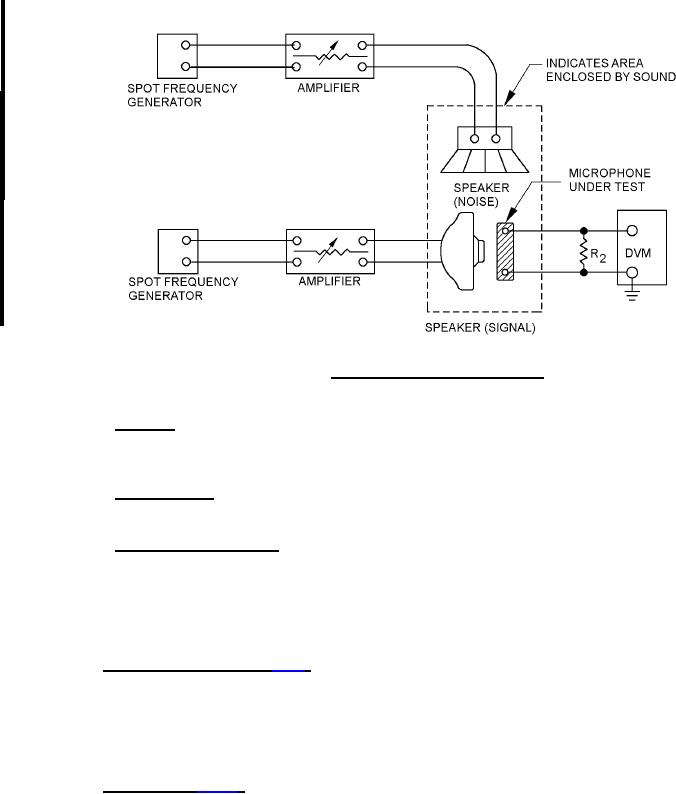
MIL-PRF-26542F
FIGURE 2. Signal-to-noise apparatus setup.
4.5.6.1 Field coil. The magnetic field for this test may be produced by a coil of 700 ▒ 10 turns of No. 18
enameled wire 6 ▒ 0.50 inches by 6 ▒ 0.50 inches in cross section or 6 ▒ 0.50 inches in diameter and
winding length of 10 ▒ 0.50 inches.
4.5.6.2 Calibrating coil. The calibrating coil shall consist of a single-layer solenoid, wound with 123 ▒
10 turns of No. 34 enameled wire on a nonconductive, nonmagnetic mandrel 0.5 in ▒ 0.010 in diameter.
4.5.6.3 Measurement procedure. Excite the field coil with 250 ▒ 10 mA of 400 Hz ac current. Connect
the microphone to a Ballantine Electronic Voltmeter Model 300A, or its equivalent. Closely twist the leads
from the microphone to the voltmeter. Orient the microphone in the center of the field coil for maximum
output voltage and record this value. Then substitute the calibration coil for the microphone. Orient the
calibrating coil for maximum output voltage in that portion of the field coil previously occupied by the
microphone and record the output voltage.
4.5.7 Stray magnetic field (see 3.5.9). The stray magnetic field of the microphone shall be determined,
using a Keuffel and Esser Type No. 5600 compass, or its equivalent. The motor of the microphone shall
be placed with its geometric center 12 ▒ 0.50 in (unless otherwise specified (see 3.1)) from the pivot point
of the compass needle and on the perpendicular bisector of the needle in the plane of rotation of the
needle. The microphone shall be oriented in all directions and the maximum deflection of the compass
observed. This test shall be made in a location substantially free from stray magnetic disturbances.
4.5.8 Linearity (see 3.5.10). The output voltage developed by the microphone across a resistive load
(as specified, see 3.1) shall be measured at any four frequencies between 700 Hz and 4,000 Hz with an
input sound pressure of 74 dB, 94 dB and 114 dB, relative to 20 ÁPa, respectively. In performing linearity
measurements, precautions shall be taken to ensure that the sound pressure at the "nontalking" port has
a level not less than 15 dB below the sound pressure level at the "talking" port.
16
For Parts Inquires call Parts Hangar, Inc (727) 493-0744
© Copyright 2015 Integrated Publishing, Inc.
A Service Disabled Veteran Owned Small Business